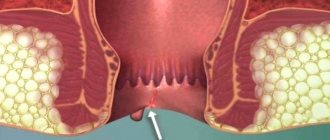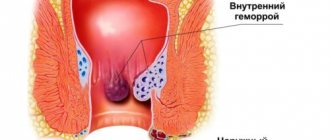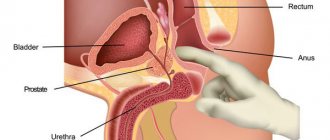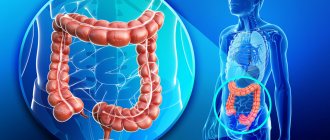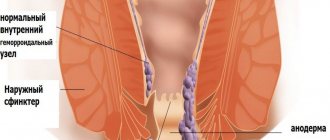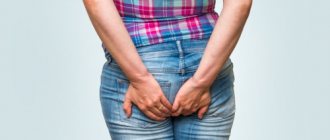Problems with the rectum lead to daily excruciating pain. But thanks to modern medicine, such discomfort is easy to get rid of. It is important to note that hemorrhoids and fissures can be treated only after special diagnostics and examination.
First of all, they relieve pain. Only after this are therapeutic measures carried out, which in 70% of cases lead to positive results, provided that the instructions and prescriptions of a medical specialist are followed. Doctors note that anal fissures due to hemorrhoids can be cured in several ways.
Special diet
To prevent new cracks from appearing, patients need to change their usual diet to prevent diarrhea and constipation. In case of rectal defects, it is necessary to exclude alcoholic drinks, sour, fried, spicy, salty foods from the menu.
For constipation, it is recommended to consume the following foods:
- Various cereals. It is better to give preference to oatmeal.
- Olive and vegetable oil.
- Coarse bread.
- Yogurt.
- Liquid soups.
- Vegetables and fruits containing a large amount of dietary fiber (fiber): apples, beets, bananas, carrots and others.
- Dairy products.
You need to drink at least 3 liters of water every day. The recommended volume of fluid depends on the individual characteristics of the body.
If the patient has chronic diarrhea, then the consumption of the following foods should be limited:
- Cabbage.
- Confectionery.
- Milk.
- Fresh fruits.
- Legumes.
- Full fat milk.
Following a special diet allows you to quickly achieve the desired results.
How to distinguish inflammation of hemorrhoids from a fissure?
Both diseases develop in the rectum, which is highly sensitive due to its extensive network of nerve endings. A specialist who diagnoses and treats diseases in this area - a proctologist - is able to correctly recognize intestinal symptoms.
In the table we provide classic examples of distinctive symptoms.
| Sign | Manifestation in hemorrhoids | Manifestation of rectal fissure |
| Pain | Not typical in stages I–II. Disturbing discomfort inside the anus, a feeling of incomplete emptying. An intense attack causes strangulation of the node and thrombosis. Irradiation to the coccyx and sacrum is noted. | The most intense in the acute form, sharply intensifies after bowel movement. Lasts several hours. Because of the pain, patients are afraid to go to the toilet, and psychogenic constipation occurs. A chronic fissure does not cause strong sensations. |
| Itching and burning | Possible from an early stage, caused by the leakage of mucus. | Worry when the cracks are large. |
| Bleeding | Occurs due to injury to the wall of the node with feces. Appears after stool or as a trickle with sphincter incontinence. | There is no excessive bleeding; smears on toilet paper are possible. |
| Getting wet | Most pronounced at the late stage of the disease. Serous fluid is squeezed out of the stretched vessels. Spreads to the perianal area, perineum, buttocks. Promotes the development of dermatitis, furunculosis, eczema. | During an inflammatory bacterial process, pus with an unpleasant odor appears in the mucous secretions. |
| Knots falling out | Internal nodes are felt in the canal, and external ones are palpated around the anus. Reducibility is determined by the degree of stretching of the muscular-ligamentous apparatus of the fixing structure. | Absent in case of independent disease. |
| Anal sphincter spasm | Not typical, possible only when the muscle is overirritated by internal nodes. | Lasts from several minutes to hours. |
| General symptoms | Changes in character, signs of neurosis. | Irritability, insomnia. |
In order to somehow distinguish hemorrhoids or a fissure that is bothering the patient, the doctor must examine and palpate the anus and canal. The use of anoscopy and sigmoidoscopy allows us to examine deeper changes in the intestine. It is impossible to distinguish the symptoms of a fissure complicating hemorrhoids. The patient's disease worsens, bleeding and pain increase, and the burning sensation becomes painful.
Baths for anal fissures
After emptying, it is recommended to take special baths for 15 minutes. The temperature of the solution should not exceed 30 degrees. To prepare you need to use:
- A mixture of oak bark and chamomile decoction in a 1:2 ratio. Thanks to its anti-inflammatory and astringent effect, wounds dry out.
- You can also prepare a bath by adding potassium permanganate to the water. It acts as an antiseptic.
It should be noted that when using potassium permanganate, the water should acquire a pale pink color.
Chinese musk ointment for hemorrhoids
Among Chinese ointments for hemorrhoids, we highlight the composition with the most effective anti-hemorrhoidal effect - Musk ointment. This drug has a rich multicomponent composition. He contains:
- Musk is a biologically active substance produced by the endocrine glands of some animals. It is a stimulator of immunity and blood flow. Eliminates congestion
- Amber (particles) – strengthen membranes and tissues.
- Pearls (particles) – stop bleeding.
- sBuru is an antibacterial and antimicrobial component.
- Borneol is an antibacterial component that effectively neutralizes staphylococci and streptococci. It also stimulates regeneration.
- Calamine is a powder with a high concentration of zinc carbonate and iron oxide, dries and protects against the penetration of pathogenic bacteria.
https://www.youtube.com/watch?v=TF047Hck94I
The manufacturer regulates the high effectiveness of this composition in the treatment of hemorrhoids. The instructions for the ointment say that it can completely cure diseases in the initial stages of development, and significantly alleviate the condition of developed hemorrhoids with frequent constipation and bleeding.
Indeed, such a rich composition cannot but help in the treatment of hemorrhoids. With one caveat - if it is really real and contains all the components listed in the instructions.
Musk ointment is used for treatment, prevention and after removal of hemorrhoidal cones. The use of musk ointment after removal of hemorrhoids can speed up healing, regeneration and prevent infection of the wound with feces.
Ointments
If the patient has severe pain due to rectal wounds, the doctor most often prescribes the use of various creams and ointments. Such preparations are made on a fatty basis, have an anti-inflammatory effect and do not contain irritants.
Method of use
Creams can be used only after bowel movements and a bath, 1-2 times daily. The course of treatment is about 10 days. The duration depends on the effect of therapy. Experts recommend using the following drugs as restorative ointments:
- Aurobin. The components included in the ointment have an analgesic, anti-inflammatory, and healing effect. Contraindicated for people with individual intolerance to the drug, with viral diseases, as well as for women during pregnancy and lactation.
- Ultraproct. Allows you to reduce itching, pain and slow down inflammatory processes.
- Solcoseryl. Accelerates wound healing and restoration of rectal tissue.
- Methyluracil. Maz has anabolic and anti-inflammatory effects.
- Proctosan. Promotes rapid healing of rectal wounds.
- Emla. Prescribed for the chronic form of the disease. It has side effects, so it is prescribed only by a qualified doctor.
- Nitroglycerin ointment. Prescribed by a proctologist to reduce pain.
Description of the problem
Hemorrhoids are a disease of the veins of the final part of the rectum. The first minor symptoms can quickly develop into a severe stage of development. Therefore, it is so important to start treatment promptly and correctly.
The main reason for the development of hemorrhoids is the weakness of the vascular system. The veins become stretched and inflamed, and blood begins to accumulate in them. Exacerbation of the disease can be caused by poor nutrition, heavy lifting, sedentary lifestyle, bad habits, pregnancy and childbirth.
Proctologist Lobanov: More than 30 years of my practice have shown that there are no miracles in the treatment of hemorrhoids, and at the same time, there are remedies that can help many people with this delicate problem.
More details>>
Fissures in the anal area are small wounds and abrasions. The mucous membrane that protects the anus is damaged. Most often, cracks appear on the back wall of the anus. Less often they are found on the side and front walls.
The patient begins to feel a feeling of discomfort. Pain of varying intensity, itching, tingling, burning may occur. Very often the appearance of cracks is combined with hemorrhoids.
With hemorrhoids, wounds and cracks can occur due to constipation, weakening of the muscular ligaments of the rectum, chronic diseases of the digestive tract, and heavy physical labor.
Proctologist Kolesova: Hemorrhoids are a serious disease that causes a lot of anxiety, fortunately, there are remedies that help both relieve symptoms and help heal. One of them …
More details>>
Rectal suppositories
The most effective means for treating cracks are special suppositories that are inserted into the anus at certain intervals. They relieve spasms and pain, and also have a laxative effect. Suppositories are administered 2 times a day after defecation. Drugs with this effect include:
- Aurobin. Candles that have the same effect as the cream of the same name.
- Procto-glivenol. Reduce pain, stimulate blood flow to the anus, reduce swelling.
- Relief. Accelerate tissue healing. They have contraindications, so you should consult your doctor.
- Preparations with methyluracil. Accelerate metabolic processes and improve the functioning of the immune system.
How to treat hemorrhoids with fissures using folk remedies?
Despite the fact that folk remedies are made only from natural ingredients, their use must be agreed upon with the treating doctor.
You also need to understand that traditional medicine is not effective enough to completely get rid of hemorrhoids or anal fissure, and therefore can only be used as a complement to the main treatment.
The list of homemade candles is not numbered, but begins with capital letters and ends with a period. how to proceed?
- Rectal suppositories made of ice. This remedy can be prepared either from water, frozen in paper cones, or from infusions or decoctions of medicinal plants (chamomile, oak bark, marigold, nettle, strawberry and others).
- Potato rectal inserts. These suppositories are very easy to prepare. To do this, you need to cut small cylinders from raw potatoes, which are moistened in vegetable oil before inserting into the anus.
- Aloe inserts. A piece of aloe leaf is cut lengthwise and rolled into a tube, which is inserted into the anus at night.
Homemade ointments
The following ointments are especially popular for anal abscesses:
- with propolis . To prepare the ointment, melt 100 grams of butter and 10 grams of bee glue in a water bath until a homogeneous mass is formed. The cooled medicine is applied to the external node and fissure of the anus 4 times a day or inserted into the rectum using a cotton swab;
- with mumiyo . 100 grams of pork lard are mixed in a water bath with mumiyo peas and 20 grams of aloe juice. The finished product is cooled and applied externally or rectally 2 - 4 times a day.
Baths
Baths for anal fissures are carried out mainly with decoctions of medicinal plants. The most useful in this case will be chamomile, marigold, St. John's wort, oak bark and sage.
You can also use a weak solution of potassium permanganate for baths, especially when cracks show signs of bacterial infection.
The temperature of the bath solution should correspond to body temperature. Hot and steam baths are strictly contraindicated for bleeding cracks.
Microclysters
Microclysters are indicated for internal hemorrhoids complicated by anal tears.
Carrying out microenemas allows not only to reduce inflammation in the anus, but also to soften the stool, which is important in this situation.
Most often, vegetable oils (sea buckthorn, pumpkin, olive or flaxseed), decoctions of medicinal plants, a solution of mumiyo or honey are used for douching.
The procedure is carried out before bedtime. Take 40-50 ml of medicinal solution into a small enema, lubricate the tip with Vaseline and inject it into the anus.
Laxatives
The main reason for the formation of anal fissures is irregular bowel movements. Most often, laxatives are available in tablet form. They not only have a softening effect, but also help cleanse the body of harmful toxins. Laxative medications vary in their effect. Therefore, they are prescribed by a proctologist.
Surgical intervention for the treatment of anal fissures
If medications do not lead to positive results within 2 weeks, the doctor may prescribe surgery. It is important to note that such measures are resorted to only in the chronic form of the disease.
Cracks in hemorrhoids are removed with a laser or electrocoagulator. According to numerous patient reviews, the first method is more effective.
The doctor may also prescribe the following therapies:
- Devulsion. The sphincter is dilated under local anesthesia. This method is contraindicated for elderly people.
- Sphincterotomy. Cracks are removed.
- Cryodestruction . Treatment with liquid nitrogen.
To avoid such serious measures, it is recommended to prevent hemorrhoids, and if they appear, promptly carry out appropriate treatment.
Relationship between hemorrhoids and anal fissure
In a healthy person, epithelial tissue cannot separate; minor injuries are quickly healed by the accumulation of immune cells. This explains why people who have lost protection due to old age, long-term chronic diseases, women in the postpartum period, and patients in oncology institutions after a course of chemotherapy and radiation therapy suffer more.
Common signs of hemorrhoids and fissures:
- localization of the process in the rectal canal (cracks are often at the border with the skin along the back surface, less often in front and on the sides, internal nodes in the middle part of the anal canal or outside under the skin of the anus);
- the possibility of acute and chronic course of the disease (a fissure is considered acute if it disappears 1.5 months after treatment, chronic - it lasts for many years with exacerbations and remissions);
- exacerbations are facilitated by increased pressure in the abdominal cavity, constipation, and diarrhea.
